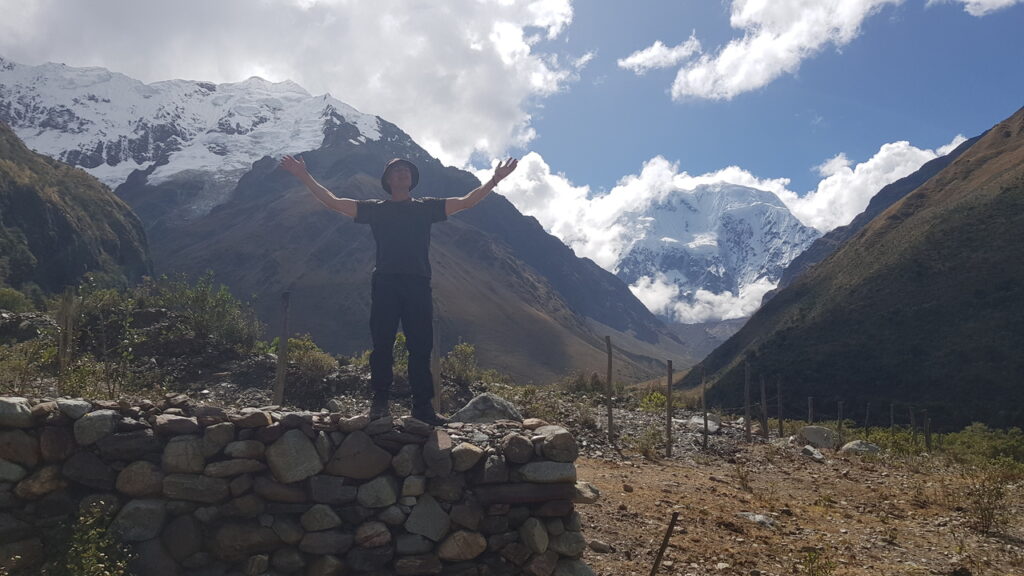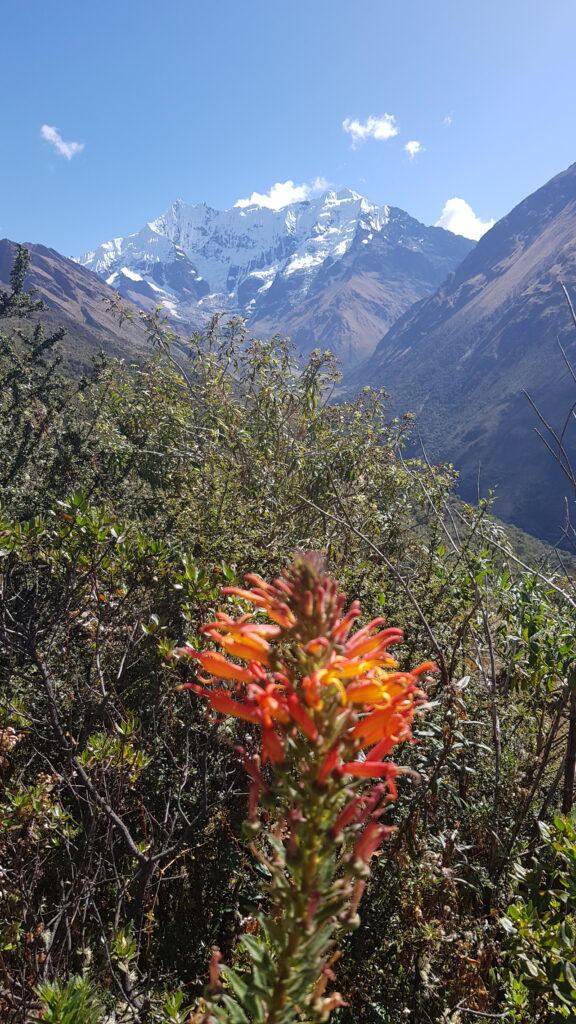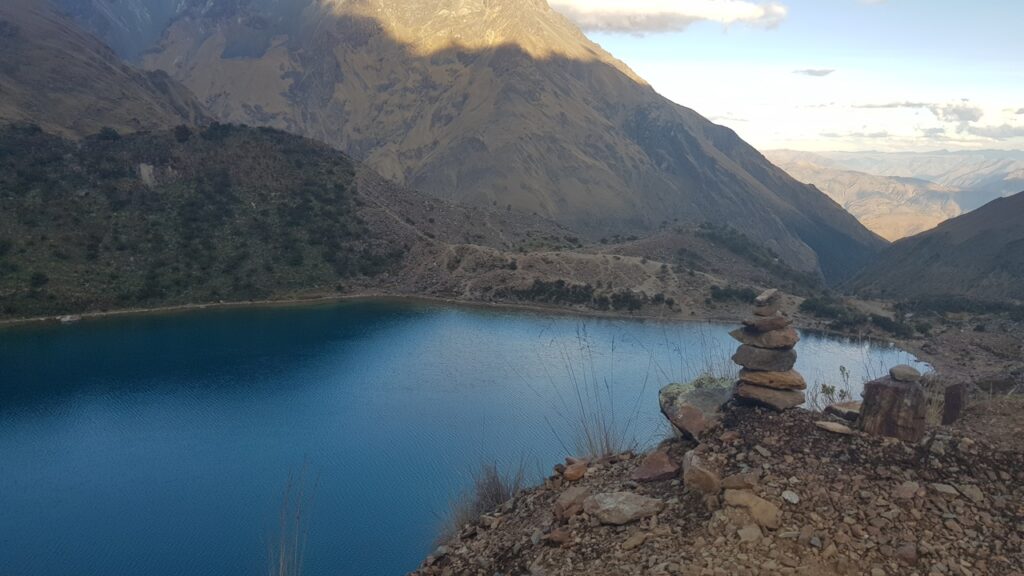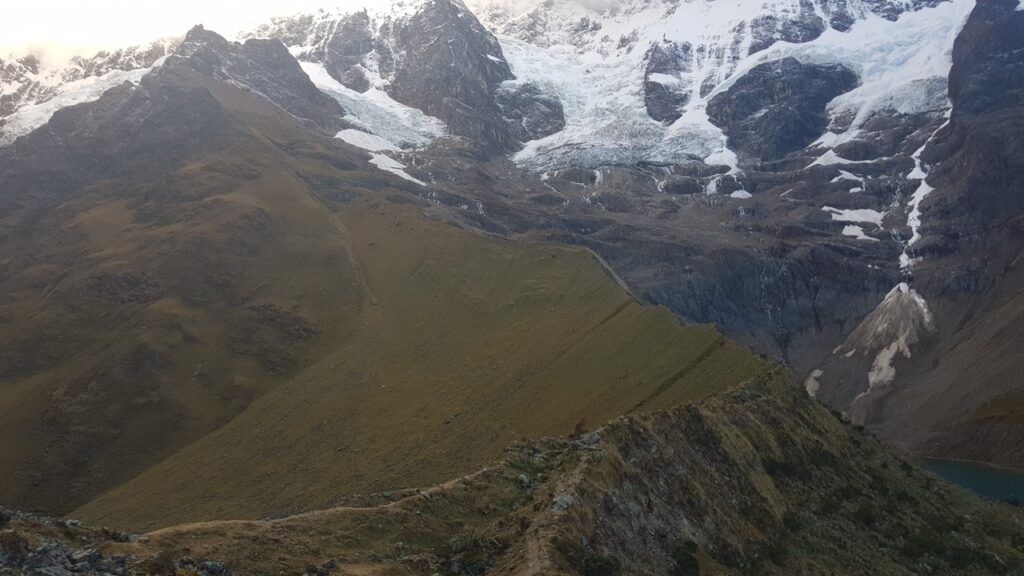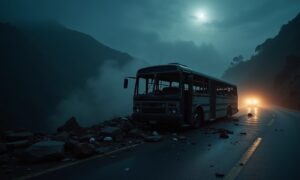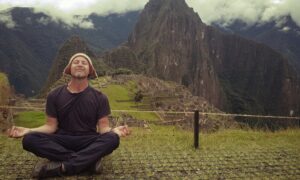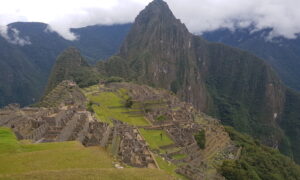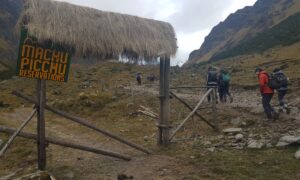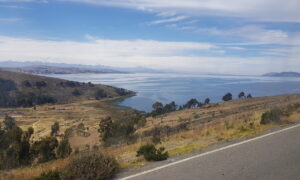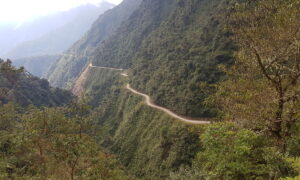The Salkantay trek is a popular alternative to the infamous Inca Trail. Compared to the Inca Trail, the Salkantay route is longer, more challenging, passes over higher peaks, offers more dramatic landscapes, is a lot less touristy, and also substantially cheaper. To me, this all sounded like getting more for less. The only reason I can think of to do the Inca Trail is if you’re not an avid hiker and prefer a shorter route, or if you’re particularly interested in the historical aspect of walking in the exact footsteps of an ancient civilisation. Though, Salkantay trek crosses many Inca trails too. To me, the biggest drawback is the crowd the Inca Trail attracts. Which also means you have to book well in advance, a skill I have an utter lack of.
There are plenty of tour agencies all over Cusco, and I recommend booking once you get there to get the best price. There were people in our group who booked online at three times the price we paid for exactly the same service. The tour company provides all the food, with a few exceptions such as the morning of day one. For the rest of the trip, all meals are included. Although we did a fully guided hike, one could easily do it on their own if they have the necessary equipment to endure the icy conditions at 4000 metres. I’ve heard of quite a few people who did it. I would have loved to do it that way too, but was unable to find people willing to join me on such short notice.
Salkantay trek day 1:
I didn’t get much sleep as I had to be packed and ready for my 5 am pickup. When I got in the van, I was met by a few sleepy tourists who seemed as unimpressed by the early rise as I was. Consequently, there wasn’t much eager conversation as we drove around Cusco in the dark, picking up the other members of the trek. With 3 hours of driving ahead, everyone opted to catch up on some sleep.
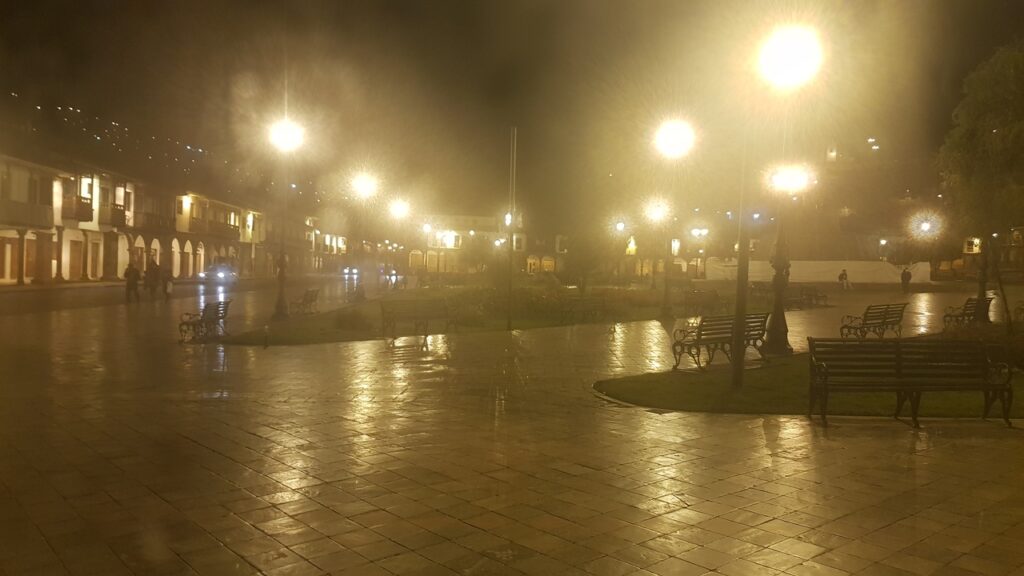
The quietness was soon interrupted by a call to cough up money for unexpected park fees. I might have been vaguely aware of this fee, but many of the others on the trek definitely weren’t. This caused quite an uproar, particularly from a British couple, Oliver and Felicity, who, safeguarding against scams, had explicitly requested assurance from their tour agent that there wouldn’t be any additional fees outside of the $200 they paid for the trek. The guides and porters are generally either independent or from another company, so what the tour agents sell at whatever price has little to do with the guides. As a result, there was little use in fighting them, and the commotion soon tapered down. With the mood slightly tense, we were on our way again.
We soon stopped for breakfast, which, unsurprisingly, was not included in the price for most of us. During breakfast, we got to know each other a bit better. I sat next to Raj, a French guy working in software development. Since it’s a topic I’m well familiar with, I engaged him in a conversation about his work as well as the usual travel questions: “how long and where are you travelling.” I briefly interacted with a few others around the table as well. There was Jana, a 19-year-old Austrian girl doing volunteer work in one of the villages in Peru; Anton, a 23-year-old from Denmark on a three-month trip; two French friends in their thirties on a short holiday; two Israeli girls also on a short holiday; and finally, Oliver and Felicity, a couple who had quit their jobs and were on an around-the-world trip starting in South America. People seemed friendly enough and I’m sure we were all going to get along well.
At around 9 am, we reached the start of the trek. We were each allowed a small bag, weighing no more than 5 kg, to be carried by the mules to our camps for the evening. This isn’t much, considering our sleeping bags, required for the freezing nights, weigh around 2-3 kg. However, I didn’t have much else to pack other than a charger and a few extra clothing items that I wouldn’t need during the hike. Given the mixed experience levels in the group and the gaps in the information received, some were severely over-packed. Nonetheless, we managed to distribute the weight between us, got the mules packed, and were soon ready to set off.
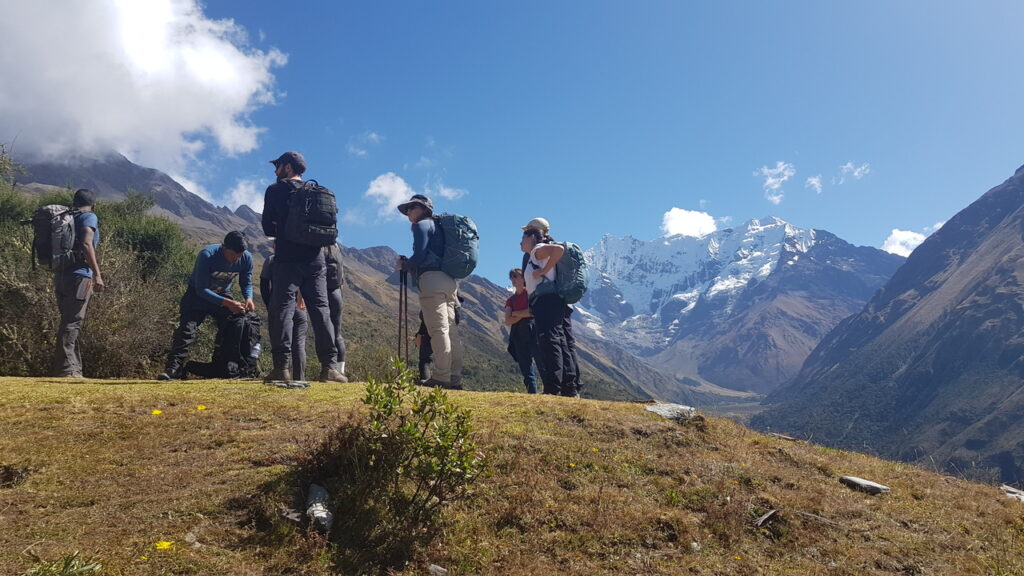
The trek started at an altitude of 2900 metres, and the campsite we were heading to was at 3800 metres. Although this wasn’t a significant elevation gain, the altitude affected some members of the group. We started climbing immediately, and the two Israeli girls quickly fell behind. One of them had done quite a few treks in Israel and maintained a slow and steady pace, but the other was struggling a lot. Consequently, the overall pace of the trek was very leisurely for me. I was able to skip along, engaging in interesting conversations with Anton and Jana.
Around six hours later, we reached the campsite at about 3 pm. To my surprise, it wasn’t a tented campsite at all. Instead, there were charming little A-frame structures just big enough for two single beds. Much more luxurious than I anticipated. We had to partner up, so Anton and I decided to pick the first one. I’m always wary of snorers, and thus have a bias towards sharing rooms with younger people, women or men in good shape. Anton didn’t seem like a snorer and we already got along well. After settling into our huts, we all took a well-deserved rest before the scheduled walk up to the glacier lake, about 400 metres above the campsite.
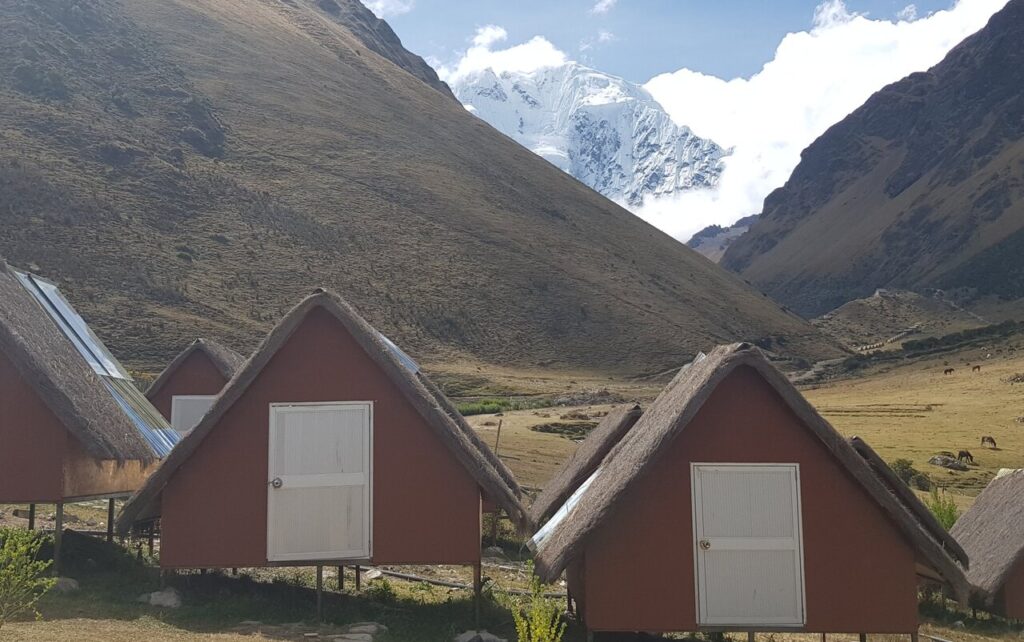
The campsite was surrounded by a truly spectacular landscape, with only a few rustic huts and stone houses where the locals catering to the treks lived. It was a true mountain-style setting, absolutely picturesque. When we first arrived, the snow capped peaks around us were clearly visible, but that soon changed as rain clouds began creeping in.

The lake we were heading to was a photo highlight: a bright turquoise alpine lake surrounded by breathtaking snow- and glacier-capped mountains. A picture that would be pretty useless if surrounded by clouds and mist, so we waited a bit in hopes of the clouds clearing. Unfortunately, they didn’t, but some of us set out anyway since it was getting late and would soon be dark. We had no more time to wait. On the way up, we experienced some light rain, and I really hoped it wouldn’t get worse because, even though I had a rain jacket, I didn’t have waterproof trousers and could only sustain a small amount of rain. Luckily, it didn’t get worse, and we finally reached the top. It was still cloudy, so the mountains weren’t entirely visible, but at least we weren’t surrounded by clouds. It was freezing cold, though.
After taking some pictures, I huddled close to Jana, who was sitting on a rock, in an attempt to escape the cold. As we sat on the rock together, we shared an appreciation for the beauty of it all and how few people ever venture out to experience this level of natural beauty. Though people were around, we felt a profound silence as we listened to the chilly wind, the gentle waves of the glacier lakes, and the distant joys and laughter of others in the background. I would like to think that Jana also reflected on how we will carry the memory of that moment—a moment of awe, wonder, and bliss—in a special place in our hearts.


